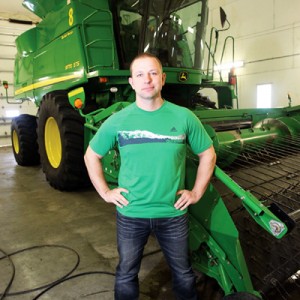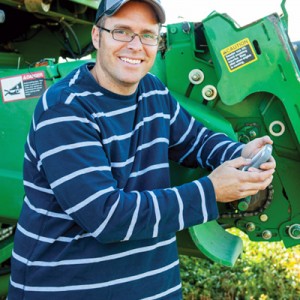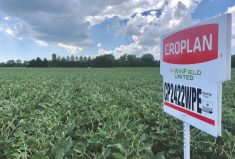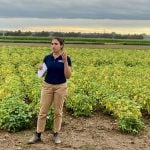In business circles, there’s the five-year plan, the two-year plan and even the one-year and the six-month plan, each with its own sub-plans loaded with hard production and financial targets. They’re a fact of life, and they are crucial management tools. Just ask any manufacturer, or the owner of any store that turns the kinds of numbers that today’s farms generate.
Can such detailed production planning work in agriculture? With so many factors beyond your control, from the weather to the futures market, it’s little wonder that field plans get fuzzy in a hurry when you try to extend them beyond the coming season, becoming a reflection more of your aspirations than a concrete to-do list.
Read Also
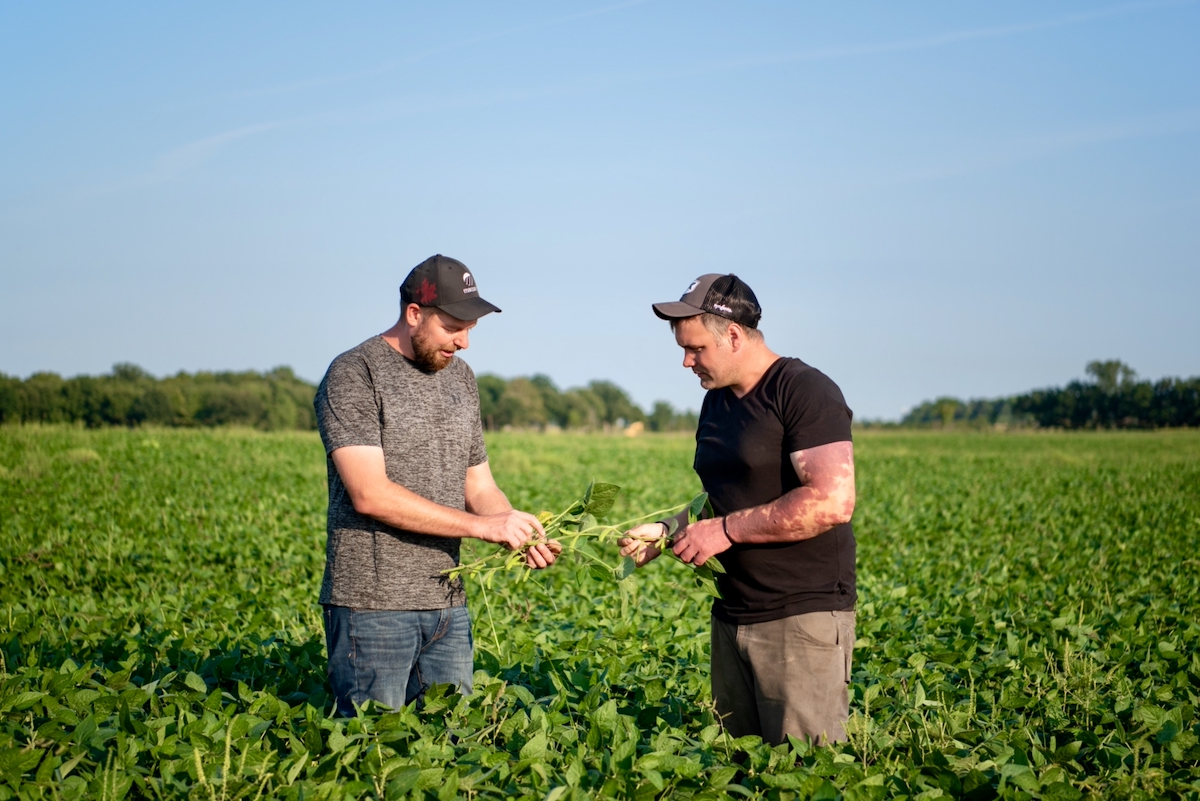
Ontario farmers partner for success
Ontario business partners, Matt Bergman and DJ Wassenaar, have been farming together for 10 years. Their focus on integrating unconventional…
But that’s changing. Country Guide spoke to four producers — two from the West and two from the East — about their advanced planning. How far ahead do they look? How specific do they get? Does planning help?
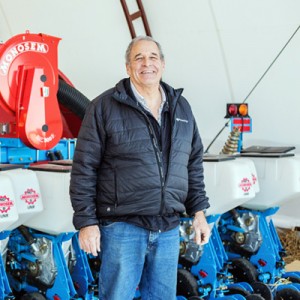 “Good decisions drive the operation.”
“Good decisions drive the operation.”
Craig Shaw,
Red Deer, Alta.
Planning is good, as every farmer knows. But so is flexibility.
For Craig Shaw, who farms near Red Deer, Alta., there isn’t a contradiction. A good plan creates opportunities to manoeuvre.
Shaw usually starts his cropping plans during the late summer, close to harvest (i.e. roughly six to 10 months ahead of seeding) to make the most of his fall fertilizing program as he builds his fertility plans. Marketing plans are done as far ahead as he can begin pricing the crop, usually about a year in advance. Storage plans are usually estimated prior to the crop going in the ground, then modified with the approach of harvest. And capital and equipment plans are also mapped out roughly a year ahead.
Shaw is also working to move as much as possible to a fall herbicide program, which he says will help him meet his goal of seeding more of his crop the following spring within an optimum timing window.
“Planning ahead is critical to a farming operation,” says Shaw. “The plan isn’t set in stone and will likely change during the growing season, but at least it provides you a base to work with. And advance planning is helped by experience level — making decisions and commitments are easier when past experience has taught you valuable lessons. Management requires some time commitment and access to good information.”
Shaw has been refining his approach to plans and strategies for the past 15 years, and he readily acknowledges the time it takes to set up these plans, and then to adjust them according to markets and conditions.
- More Country Guide: On the rebound
He feels it’s time that pays off. The flexibility he’s built into the system can identify how and when he can forward contract, sell off the combine or sell from storage, with a marketing schedule that also takes his cash-flow needs into account.
“The percentage of crop we forward sell is dependent on pricing opportunities,” says Shaw. “We’re in a pretty stable production area, so we’re generally more comfortable with forward contracting a higher percentage of our crop. If we’re caught short of production to fill contracts, we can make arrangements with others to fill those contracts. It’s never an issue if we’re on the right side of the market.”
Shaw adds that if he finds himself on the wrong side of the market, he simply takes his lumps and puts it down to experience. At the same time, he hopes the unpriced part of his production offsets any losses. He also assesses each crop according to the risk levels, be it on total production or quality.
But Shaw keeps referring back to the flexibility that advanced planning can provide. It’s one thing to have one plan or a series of management plans, but each has to be flexible and capable of adjustments.
Ideally, the plan should help you identify when to change by focusing your attention on key decision factors and giving you a better idea of how a decision on one aspect of the operation will affect all the others.
“If we look at the big picture, then we can react more clearly, and look at revenue generation, whether by acre or by crop,” says Shaw. “Our goal is to generate revenue above expenses on the farm, not hit the best price. I likely have made more money in my office than out doing manual labour. Good decisions drive the operation, and time needs to be spent to develop these skills.”
“My strength is sitting in the office, doing the planning.”
Steve Twynstra,
Ailsa Craig, Ont.
Planning gives the farm structure and flexibility, Steve Twynstra says. And for him, it also adds two other crucial ingredients — stability and trust.
Working from a variety of plans since the 1990s, Twynstra, owner of Twilight Acre Farms, near Ailsa Craig, Ont., also uses his system as a form of quality control, providing guidance and direction to his employees, as well as suppliers.
Twynstra values the framework provided by the cropping and marketing plans, but he also relies on them because of the flexibility they offer. Yes, there are farmers who sell predominantly off the combine, he notes, and in a year such as 2012, that strategy probably gave those growers bragging rights. But for Twynstra, who concedes to being a little more risk-averse, the longer-term average may favour his methods.
Twynstra develops both a crop plan and a marketing plan, and for him, the two go hand-in-hand. Then he also has a storage plan, a capital and equipment plan, plus a fertility plan and then another related to the financial side of things that Twynstra says neatly ties everything together.
Twynstra can even discuss the virtues of an input plan, but he does get a little frustrated with dealers who are unwilling to lock in prices in advance for herbicides or fungicides that they have in inventory.
Twynstra also says that he has tried different types of software, hoping that one or another would do the job as well as an Excel spreadsheet, which he began using while in university. Yet each time he’s tried something different, he’s come back to his familiar standard.
The primary challenge, Twynstra says, is keeping things current from year to year, and keeping things as detailed as possible. He can track different seed treatments, fungicide applications and seed pedigrees in various fields. And he wants the precision of knowing whether he’s spent $50 an acre, $50.28 an acre or $52 an acre on one input. Some growers might not need that kind of detail, but for Twynstra, it all begins with accuracy.
As for how far in advance Twynstra’s planning for his operation, he already has some of his 2015 crop sold.
“The challenge is that when you get into a situation where you’re looking that far out, I can’t tell you if I’m going to grow kidney beans or white beans — I know I’m growing edible beans on that piece of dirt, and then we have to wait for the market to catch up,” says Twynstra. “It all comes down to a crop plan. Once you have your crop plan finalized, that’s all part of mitigating risk, because that means stability. Now if someone says that takes out opportunity, I say there are two ways of looking at that, and I view it as opportunity is where you look for it.”
Twynstra owns and rents roughly 3,000 acres but those acres are spread all around Middlesex County. There’s the home farm in the northwest corner, another between Harrietsville and Avon southeast of London, and a third in the Delaware-Southwold region south of London. With that kind of spread, Twynstra also values his plans for the way they can simplify the logistics in managing operations on the farm.
“It all comes down to logistics, so knowing what seed has to be picked up at which location, and the amount, the variety, the pedigree, what fertilizer is coming from which location,” says Twynstra. Since he deals with different suppliers, he can share the information from those plans with both the driver and the supplier. “They have a copy of our plan that relates to them, so they know exactly who’s driving the truck that day, so all they have to do is say that it’s going to Twilight Farms, and that this is going to field ‘X’ and they can look at what’s required, or this is what’s needed, and go forward.”
Whether a farm is 50 acres, 5,000 or 15,000 acres is irrelevant, as far as Twynstra is concerned. He believes that any farmer, with any sized parcel of land can benefit from a crop plan or a series of plans. But he also acknowledges that different individuals have different strengths and demands for their operations.
“I guess I believe my strength is sitting in the office, doing the planning aspects of the business, rather than being physically out there, although I have that experience, also,” says Twynstra. He adds that it’s also easier to be able to manage his operation, not only on the strength of his various plans, but by the accountability they provide, and the sense of trust that can build.
“What it does is show people you’re working with that this is a farming enterprise that they want to do business with,” Twynstra says. “It all comes down to working with people you can trust, working with dealers, sales and even the workers on your own farm — with those who have the same interests.”
“You have to have a passion for planning to be good at it.”
Kris Penner,
Altona, Man.
Farming in Western Canada has always been a logistical and planning challenge for any producer, squeezing the greatest yield out of a short season. Now, the migration of corn and soybeans westward is making that challenge even tougher.
Plus, the West has the added complication of size, with more acres to cover and longer distances to drive. With that size and diversity, there’s an even greater need for advanced planning, and Kris Penner is a disciple of the trend. As operations manager with H & M Farms, a family farm operation that crops about 25,000 acres near Altona, southwest of Winnipeg, Penner believes in the stability that planning provides, particularly with the mix of wheat, canola, corn, soybeans, edible beans, winter wheat, sunflowers and oats grown on the farm. Some years, they’ll also plant a field or two of fall rye, hemp, canary seed or millet.
Penner develops four plans. His cropping plan is sketched out two years in advance. Then as the year approaches, changes can be made and the final detailed crop plan is usually in place by the end of December prior to seeding. For marketing, Penner says, H & M Farms has had production contracts which have lasted for as many as three years on cash crops such as dry beans. But most years, he says he starts marketing for the crop year as the crop plan gets closer to its final stages. Storage plans are made as the crop plan is finalized, and the capital and equipment plan is also finalized after the crop plan is in place.
“Depending on the crop and prices, we like to be 10 to 20 per cent sold by the time planting starts, and then often by July, when we can see what kind of crop is in the field, we would tend to move to 50 per cent sold on board crops,” says Penner. For crops such as dry beans, which can be contracted before planting, he will contract from 30 to 50 per cent of production.
Penner has to sell some of the crop as it’s coming off the combine because of space restrictions. Yet the amount that gets sold off the combine depends on the price at the time of harvest, along with cash-flow requirements.
Distance and the logistics involved in moving equipment or moving harvested product to its appropriate location is another reason why planning is becoming so important. Not only does Penner help oversee production on 25,000 acres, fields can be as far as 130 km from the home farm.
“We plan as well as we can during the winter months how each farm will function and operate for the season so that when it comes time to seed, everyone is on the same page and knows what to do,” says Penner. “For example, we’ll plan our canola and winter wheat rotation a few years in advance, to maintain a certain percentage of land going into winter wheat. Seeding winter wheat in the fall into canola stubble alleviates some pressure of covering those acres in spring, which is also a good fit.”
As well, when seeding certain crops which require high-residual chemicals to be used, the Penners can also plan a year to two years ahead as to what will go on those fields to avoid crop damage or failure from the previous year. As a result, Penner’s crop plan file is always available, and during the course of the year, can be changed often until the point at which it’s finalized.
Penner believes in the benefits of production plans to grow their business. Such in-depth and advanced planning may not be for everyone, he agrees, but in order to grow any business, there has to be planning and structure.
“It’s more discipline than anything else,” says Penner, noting that he’s been involved in this level of planning as long as he can remember. Over time, the plans have evolved and become more complex with the growth of the farm. “Being consistent is also very important,” Penner says. “As far as getting educated to do the planning, in that sense, anyone can do it.” But, he adds, “You have to have a passion for planning to be good at it.”
It’s a huge plus when you have the right people involved, as well. Penner declares that’s likely the biggest challenge — to manage people. There needs to be a unified approach, he says. He tries to maintain that core group of individuals by maintaining a good culture on the farm, where everyone wants to be there and pull in the same direction.
“Obviously, making the right marketing decisions, crop planning, and the discipline required to be sustainable — and not throw all the eggs into one basket, based on market swings and emotions — they’re all important,” says Penner. “In the end, and in my opinion, it’s all about the people you have around you. When you have good people, the rest is easy.”
“Thinking strategically will be critical in the next five years.”
Jeff Barlow,
Binbrook, Ont.
Getting the most out of what technology can offer is very high on Jeff Barlow’s list. Working with his father Earl, Barlow was an early Twitter user, tracking cropping research and agronomic advice from multiple sources.
Now Barlow relies on overlapping plans to manage the family’s 4,500 acres of crops near Binbrook, Ont., southeast of Hamilton. His rotations are mapped out two or three years in advance, and a marketing plan is laid out a year beforehand, as is his storage plan.
Planning for capital equipment is done a year ahead, and Barlow has a payment timeline to know when installments are coming due and when a loan or lease is nearing its end.
“Advanced planning is a big part of what I do on the farm,” Barlow says. He works with his father on the long-range planning and then lets the team execute it. “If I’m in the office, my father is great at turning those plans into reality and just getting things done,” he explains. “I try to be more visionary… I usually research and collaborate with university extension and my agronomist. When the idea looks like it’s something we should try, I take it out to my team and ask them for their input.”
Barlow values his father’s input on this type of planning. Earl has the perspective that can only come with experience, while Barlow has the cutting-edge connectedness and desire to make the most of his advanced planning. He calls his father a “doer” who lives in the moment, while Barlow believes he’s at his best before the season begins, planning and working with new concepts and technologies.
Barlow can envision the idea or the plan, and his father and a couple of their employees can put that plan into action, so it’s a very co-ordinated and efficient operation.
But from a planning perspective, Barlow believes all farmers are pretty good planners, simply because they wouldn’t last very long if they didn’t have some sort of guideline.
“Thinking strategically will be critical in the next five years, and planning your farm like Southwest Airlines plans their logistics will probably pay dividends,” says Barlow. “My old boss used to say, ‘Plan the work then work the plan,’ and he also said that people have more problems with the second part, so that’s another story.”
To reduce his risk, Barlow’s marketing plan is actually divided into two parts — definite and indefinite. The former takes priority, starting with the physical constraints of his storage system.
As soon as he knows how many acres of winter wheat he has in the ground, he pretty much knows how much bin space he’ll have to make sure is clear. He also knows how much wheat he’ll have to move out within two to four months of harvest to make room for soybeans or corn, since he doesn’t have enough storage for all of the crops grown on the farm.
As well, some of those bins lack full-floor aeration, meaning he always has to empty them before spring planting. So his marketing plan takes this into consideration and alerts him to those times he needs to market his grains and oilseeds.
“The indefinite side would be whether I store that corn for the long haul or sell it earlier,” says Barlow. “So I usually have a pretty good sense of when they will be moving out, with some exceptions, depending on crop marketing. The biggest two challenges are easily weather and markets. Both are out of my control but high on the risk scale.”
Are there times when it’s to his advantage to store crops, versus contracting them, regardless of space limitations? Yes, replies Barlow. Typically, there is some volume of corn that’s stored into the early fall, when there are usually some premiums in the market — often in the form of basis. Three out of five years, it pays to do this, he finds, but it takes planning because those same bins will be needed for the fast-approaching corn and soybean harvests.
“We aren’t big cash sellers at harvest because of the logistics of hauling grain into terminals when you need the trucks in the fields — as well as the labour — but also the long lineups that waste time,” says Barlow. “We sold a bunch last year (at harvest) just because of price. But 100 per cent of wheat is sold within approximately two months of harvest, soybeans will be half-sold within three months of harvest, and we’ve sold less corn at harvest and stored most of it.”
Like other farmers, Barlow has heard it said that planning only makes sense on huge farms. He believes it’s an outdated attitude. All farmers are being forced to plan, he says.
“I would say that in heavy clay soils, you would break even at best if you tried to plant what the markets want,” says Barlow. “Some years you might do well but other years, the rotational effect could hurt you much more. Soybeans after soybeans after soybeans don’t yield very well in my dirt, for example. We stick to our guns and how it’s laid out in my spreadsheet.”
This article first appeared in the 2014 Soybean Guide



